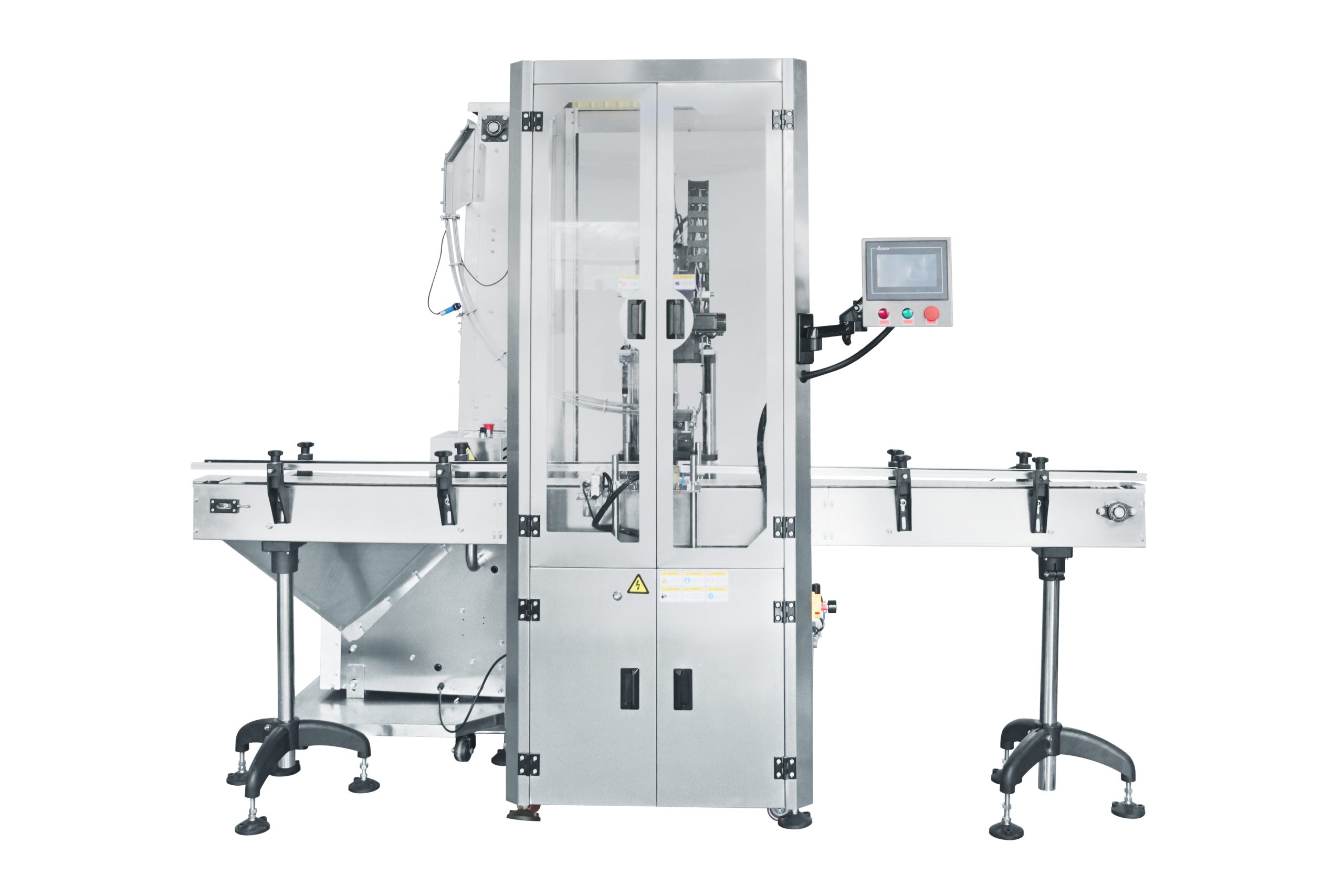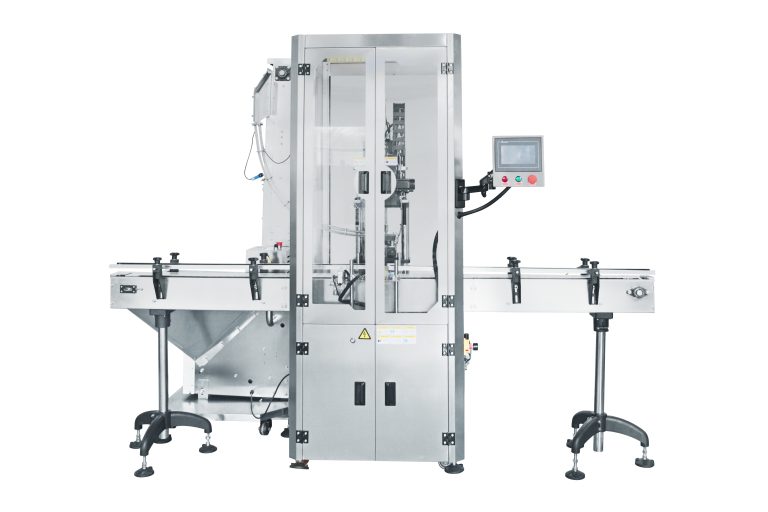Table of Contents
Benefits of Using a Single Head Pneumatic Capping Machine
A single head pneumatic capping machine is a valuable tool for businesses that need to cap plastic screw lids quickly and efficiently. This type of machine is designed to streamline the capping process, making it easier for workers to seal containers with precision and speed. There are several benefits to using a single head pneumatic capping machine, including increased productivity, improved consistency, and reduced risk of injury.
One of the primary advantages of using a single head pneumatic capping machine is the increase in productivity that it provides. These machines are capable of capping lids at a much faster rate than manual capping methods, allowing workers to seal containers more quickly and efficiently. This can help businesses meet production deadlines and fulfill customer orders in a timely manner. Additionally, the consistent performance of a pneumatic capping machine can help reduce bottlenecks in the production process, further improving overall productivity.
Another benefit of using a single head pneumatic capping machine is the improved consistency that it offers. Manual capping methods can result in variations in the tightness of the caps, leading to potential leaks or spoilage of the contents. With a pneumatic capping machine, each lid is sealed with the same amount of pressure, ensuring a consistent and secure seal every time. This can help businesses maintain the quality of their products and reduce the risk of customer complaints or returns.
In addition to increased productivity and improved consistency, using a single head pneumatic capping machine can also help reduce the risk of injury for workers. Manual capping methods can be physically demanding, requiring workers to repeatedly twist and tighten lids by hand. This can lead to strain and fatigue, increasing the risk of repetitive motion injuries. By automating the capping process with a pneumatic machine, workers can avoid these physical stresses and focus on other tasks that require their attention.
Overall, a single head pneumatic capping machine is a valuable investment for businesses that need to cap plastic screw lids quickly and efficiently. These machines offer a range of benefits, including increased productivity, improved consistency, and reduced risk of injury for workers. By streamlining the capping process and ensuring a secure seal every time, businesses can improve their production efficiency and maintain the quality of their products. Whether you are a small business looking to increase your output or a large manufacturer seeking to optimize your production line, a single head pneumatic capping machine can help you achieve your goals and improve your bottom line.
How to Properly Maintain and Clean a Single Head Pneumatic Capping Machine
A single head pneumatic capping machine is a valuable piece of equipment for businesses that need to cap plastic screw lids quickly and efficiently. To ensure that your capping machine continues to operate at its best, proper maintenance and cleaning are essential. In this article, we will discuss how to properly maintain and clean a single head pneumatic capping machine to prolong its lifespan and ensure optimal performance.
Regular maintenance is key to keeping your capping machine in good working condition. One of the most important maintenance tasks is lubricating the moving parts of the machine. This helps to reduce friction and wear, prolonging the life of the machine. Be sure to use the recommended lubricant for your specific machine, and follow the manufacturer’s instructions for lubrication frequency.
In addition to lubrication, it is important to regularly inspect the machine for any signs of wear or damage. Check for loose or missing screws, belts, or other components, and replace them as needed. Keeping your machine in good repair will help prevent breakdowns and costly repairs down the line.
Cleaning your capping machine is also crucial to its performance. Over time, dust, debris, and residue from the capping process can build up on the machine, affecting its operation. To clean your machine, start by unplugging it and removing any excess product or debris from the capping area. Use a soft brush or cloth to gently wipe down the machine, being careful not to damage any sensitive components.
For a deeper clean, you may need to disassemble the machine. Refer to the manufacturer’s instructions for guidance on how to safely disassemble and clean your specific machine. Be sure to use the appropriate cleaning solutions and tools for the job, and take care not to damage any delicate parts during the cleaning process.
Once you have cleaned and reassembled your capping machine, it is important to test it to ensure that it is functioning properly. Run a few test caps through the machine to check for any issues with the capping process. If you notice any problems, such as misaligned caps or inconsistent tightening, you may need to make adjustments to the machine or seek professional assistance.
In conclusion, proper maintenance and cleaning are essential for keeping your single head pneumatic capping machine in top condition. By following the manufacturer’s guidelines for lubrication, inspection, and cleaning, you can prolong the life of your machine and ensure that it continues to operate at its best. Regular maintenance and cleaning will help prevent breakdowns and costly repairs, saving you time and money in the long run. By taking care of your capping machine, you can enjoy reliable performance and consistent results for years to come.
Tips for Troubleshooting Common Issues with a Single Head Pneumatic Capping Machine
A single head pneumatic capping machine is a valuable piece of equipment for businesses that need to cap plastic screw lids quickly and efficiently. However, like any machine, it can encounter issues that may disrupt production and cause frustration. In this article, we will discuss some common problems that may arise with a single head pneumatic capping machine and provide tips for troubleshooting them.
One common issue that operators may encounter with a single head pneumatic capping machine is inconsistent capping. This can be caused by a variety of factors, such as incorrect air pressure, worn capping heads, or misaligned components. To troubleshoot this issue, operators should first check the air pressure and adjust it as needed to ensure that it is within the recommended range. They should also inspect the capping heads for signs of wear and replace them if necessary. Additionally, operators should check that all components are properly aligned and adjust them as needed to ensure consistent capping.

Another common issue that operators may face is jammed or stuck lids. This can occur if the lids are not properly aligned with the capping heads or if there is debris or residue on the capping heads. To troubleshoot this issue, operators should first check that the lids are properly aligned with the capping heads and adjust them as needed. They should also clean the capping heads regularly to remove any debris or residue that may be causing the lids to jam or stick.
Operators may also encounter issues with the capping machine not sealing the lids properly. This can be caused by a variety of factors, such as worn capping heads, incorrect air pressure, or damaged seals. To troubleshoot this issue, operators should first inspect the capping heads for signs of wear and replace them if necessary. They should also check the air pressure and adjust it as needed to ensure that the lids are sealed properly. Additionally, operators should inspect the seals on the capping heads and replace them if they are damaged or worn.
In some cases, operators may find that the capping machine is not capping lids at all. This can be caused by a variety of factors, such as a loose or disconnected air hose, a malfunctioning pneumatic system, or a faulty sensor. To troubleshoot this issue, operators should first check that the air hose is securely connected and not damaged. They should also inspect the pneumatic system for any malfunctions and address them as needed. Additionally, operators should check the sensors on the capping machine and ensure that they are functioning properly.
In conclusion, a single head pneumatic capping machine is a valuable tool for businesses that need to cap plastic screw lids quickly and efficiently. However, like any machine, it can encounter issues that may disrupt production. By following the tips outlined in this article, operators can troubleshoot common issues with a single head pneumatic capping machine and keep it running smoothly.






